“Don’t give up.” This was exactly what I needed to hear during my first session of Bloodborne, a game I was prepared and excited for, but which nevertheless dealt me a merciless first few hours.
During this time I was at that frantic stage, common to Bloodborne’s precursors Demon’s Souls and Dark Souls, where I had no orientation or sense of purpose. It’s a stage that many players don’t get past, and even hardened by From Software’s earlier challenges, even though I knew this was coming, it made me feel anxious, unsure, reluctant – basically the opposite of the consumer-hugging powerwords you’d expect to find on the design doc of a regular, empowering big-name game.
And then, a note on the ground – not a fixture left by a designer, but a passing scribble from a fellow-player, who happened to place it just where I needed it. “Don’t give up.”
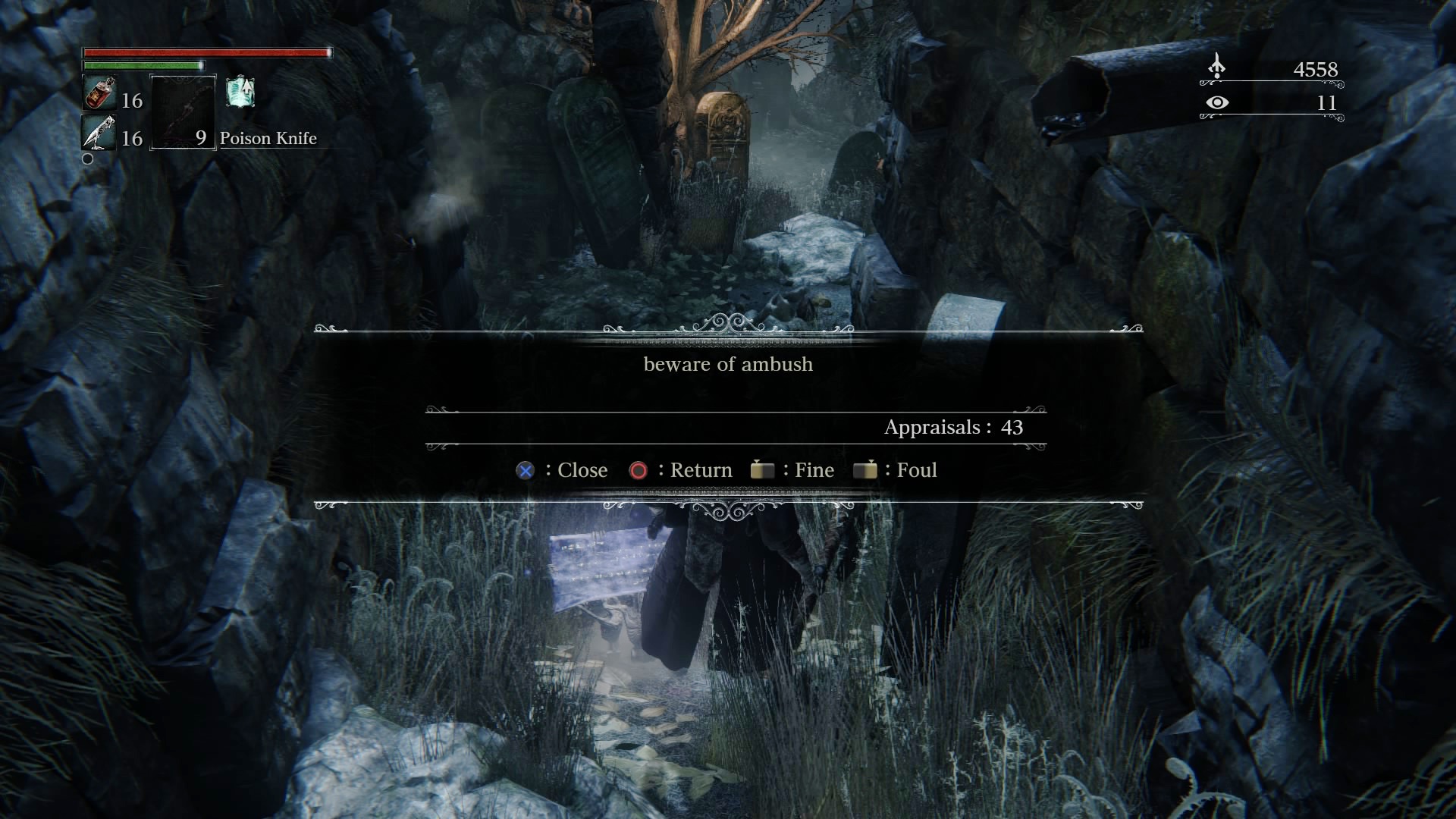
There’s been a small backlash to the critical euphoria of Bloodborne’s arrival. It’s inevitable, understandable. Hidetaka Miyazaki’s games are daunting, and demand a resilience and respect that can be read as needless severity, or in some cases a flashing sign saying “Do fuck off.” I have no issue with people who decide Souls or Bloodborne isn’t for them, even though I’ll definitely spend an annoying few minutes trying to persuade them. I have more of an issue, where this backlash in concerned, with phrases like “horrible design” or “philosophically I just don’t think games should…” and other suggestions that Bloodborne’s approach is defective because the player at hand doesn’t like it. And here’s why.
The particular magic of Miyazaki’s games is their transmission of story, an act of excavation rather than telling. These games are as much about forcing players to adjust to the rhythms and realities of their worlds as they are about placing narrative clues in statues, items or landscapes. The stories Miyazaki tells – of cursed worlds, of dreaming and dying, of hope found in flickering lights – are shaped and reinforced by the methods and mechanics peculiar to these games. This means the delirious circuit of undeath and the galling consequences of failure that some players find difficult to accept. Perhaps most importantly, it also means the invisible connections to other players forged in the darkness.
In other words, I really, really like Bloodborne’s multiplayer. Along with its forerunners in the Souls games, I don’t think there’s been anything of its kind before, anything like the way it combines with the unique approach and atmosphere of the games to give us a vast, tangled interaction, something significant and beautiful.
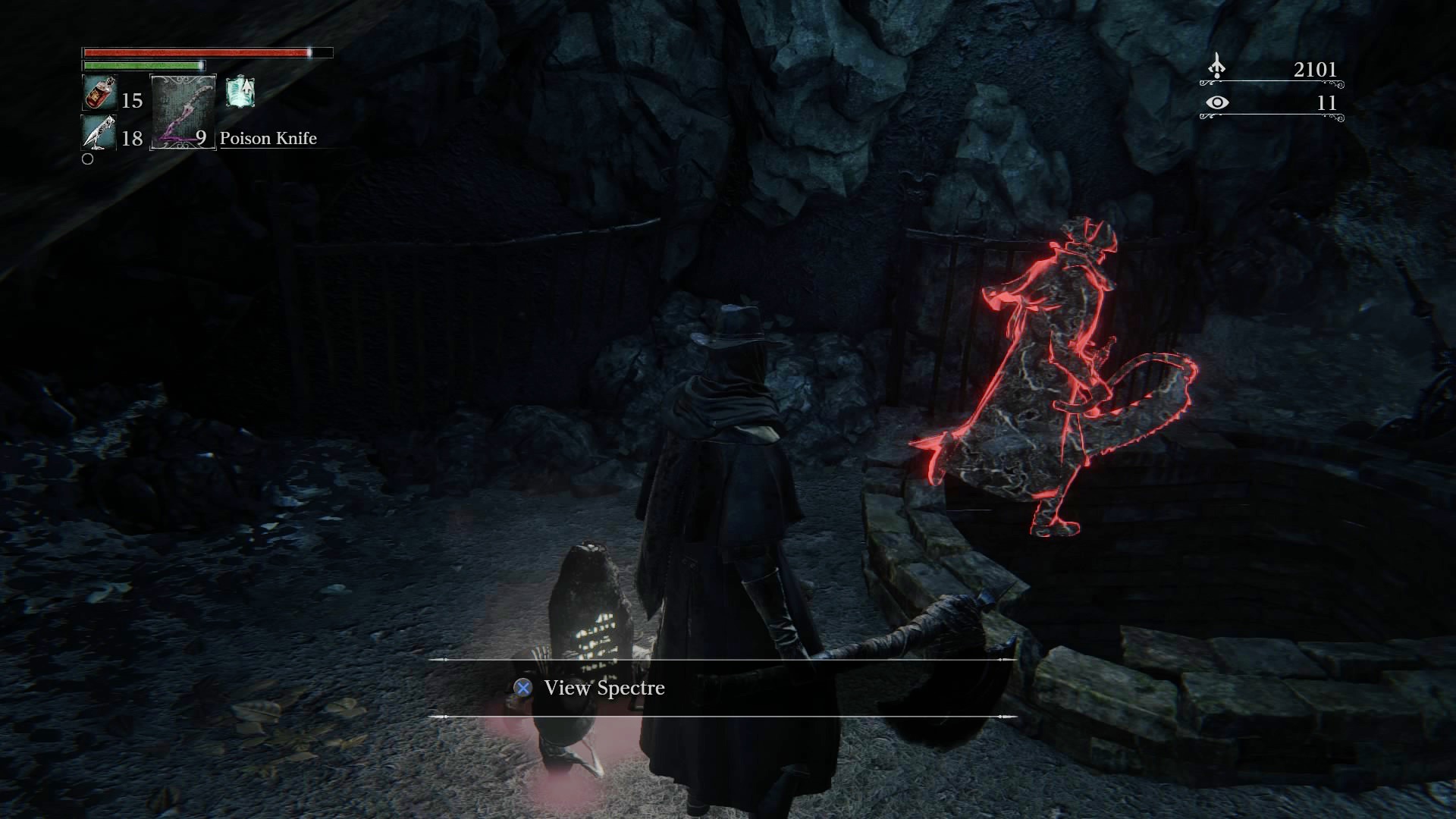
Players explore the worlds of Miyazaki’s games alone, for the most part. This loneliness is ferocious, but throughout the world there are messages and signals left by fellow explorers. Sometimes these come in the form of a ghostly white outline, a parallel player in another version of this journey. Sometimes it’s in the form of a pool of blood, the mark of a fallen player, whose last moments can be replayed and studied for hints about the dangers ahead (or, as often as not, behind, in the shadows). And then sometimes, most elusively and intangibly, it comes in the form of notes found on the ground, cryptic warnings and salutations from unseen companions.
Why cryptic? The game is careful to make sure not too much can be given away. Messages are filtered through a templated system that makes out-of-fiction specifics impossible and maintains the game’s tension and threat. These templates range from simple, complete phrases like “Behind you” or “May the good blood guide your way” (surely Bloodborne’s version of the ubiquitous “Praise the sun!”) to more complex arrangements featuring lists of nouns – humans, creatures, items – coupled with stems of sentences, like “Fear…” “Remember…” and “Reeks of…” My favourite thing about the message construction is the list called “Concepts,” because while the other lists provide a means of identifying solid objects and places that appear in the game, Concepts is a glimpse of what the game hopes you’re thinking about while you’re playing: “Night” “Dawn” “Blood” “Nightmare” “Ritual” “Curse” “Madness” “Metamorphosis” “Howling,” a combination of world-building and self-description.
Like the rest of Bloodborne, these messages offer no certainty. But they help. Let’s put me back in the sewer underneath Bloodborne’s opening area of Yarnham to illustrate this point, because this system comes into its own when Bloodborne is at its darkest. This is before I have levelled my character, before I have a grasp on the geography of Yarnham, or the patterns and strengths of my enemy, while I am lost and scared and every step into the unknown feels heavy and outrageous. What’s next? Will I lose everything? Can I bear it?
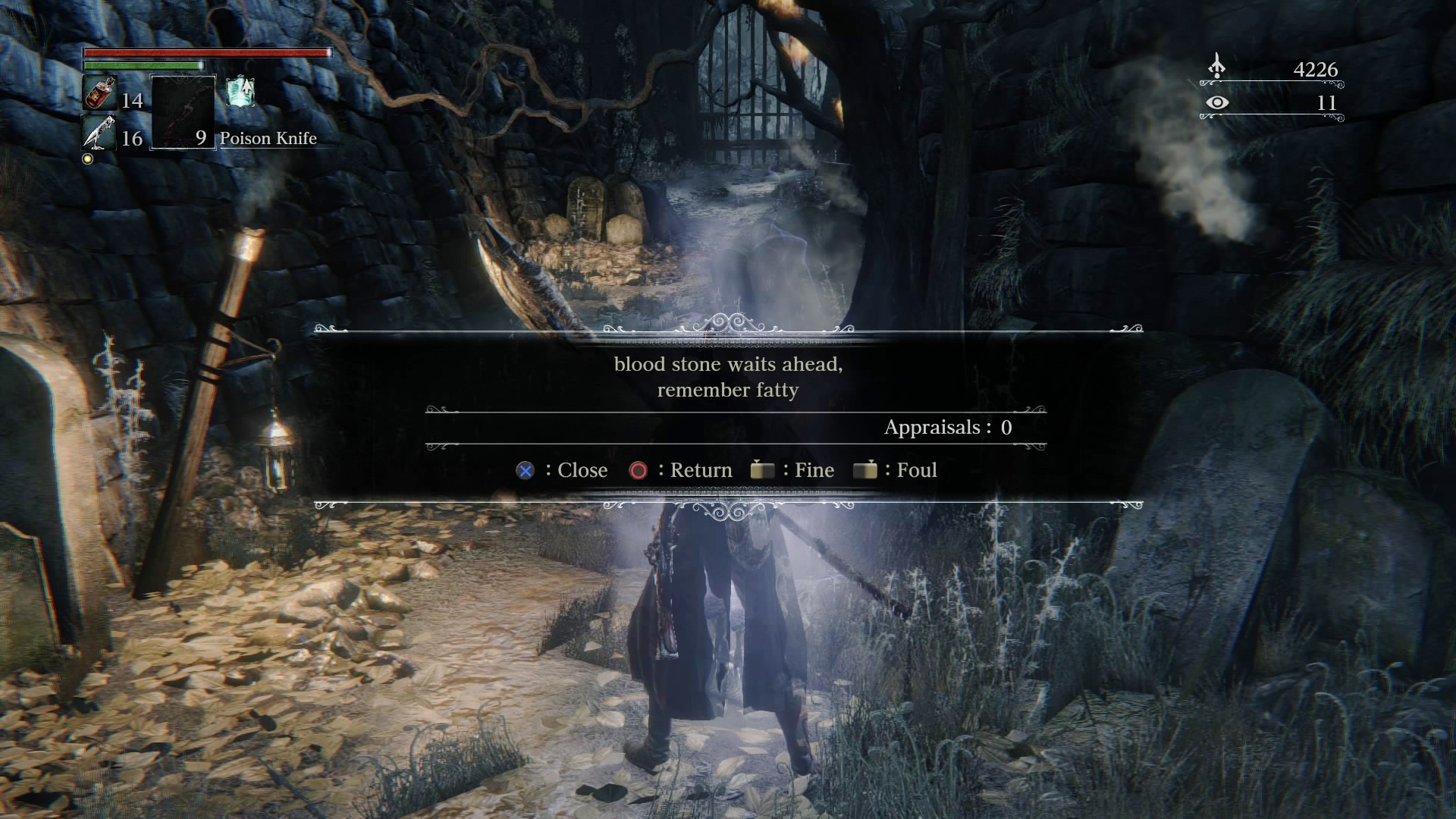
At these moments the long, rewarding journey of gradually piecing together a sense of these worlds and what has happened to them is punctuated by smaller moments of figuring out what might be around the next corner or through the next darkened doorway by surveying the collected, obscured messages of those who have gone before. Which notes can I trust? What are they trying to say? It’s a matter of sifting through the lexical peculiarities of the message system as well as divining truth from trickery (players rate the messages, adding another layer of engagement) and choosing whether or not to trust these voices from the shadows.
As an experience it’s thrilling. As a piece of human interaction, it’s absolutely unique – each note colours the surrounding area and what will unfold there, and represents a negotiation, an attempt to interpret and understand this world, potentially involving dozens of players. What’s more – and this is the key bit, the reason I make a face at “philosophically I just…” – this interaction is only made possible by the game’s punishing design. That’s why it’s there. It’s the darkness that makes these shafts of light valuable, what gives these human kindnesses and cruelties meaning.
I treasure the elegance of this messaging system, but it’s the active multiplayer, the co-operations and invasions through which players actually enter each others worlds, that provide the strongest answer to accusations of poor design. This is true in a very practical sense – co-op eases the severity of Bloodborne. Calling on help when Bloodborne is too much for you to take alone isn’t betraying the game’s design, it’s engaging with it – you’re supposed to seek out other players when a boss is too hard for you to solo, in the same way you’re supposed to offer your help to other, newer players who find themselves crashing into the same problems you’ve learned to overcome. Helping other players even offers you a no-risk way of rehearsing for daunting encounters – if you lose, no big deal, but when you win, you’ve not only made someone’s day, you come away with a whole cache of Blood Echoes to help you along your journey.
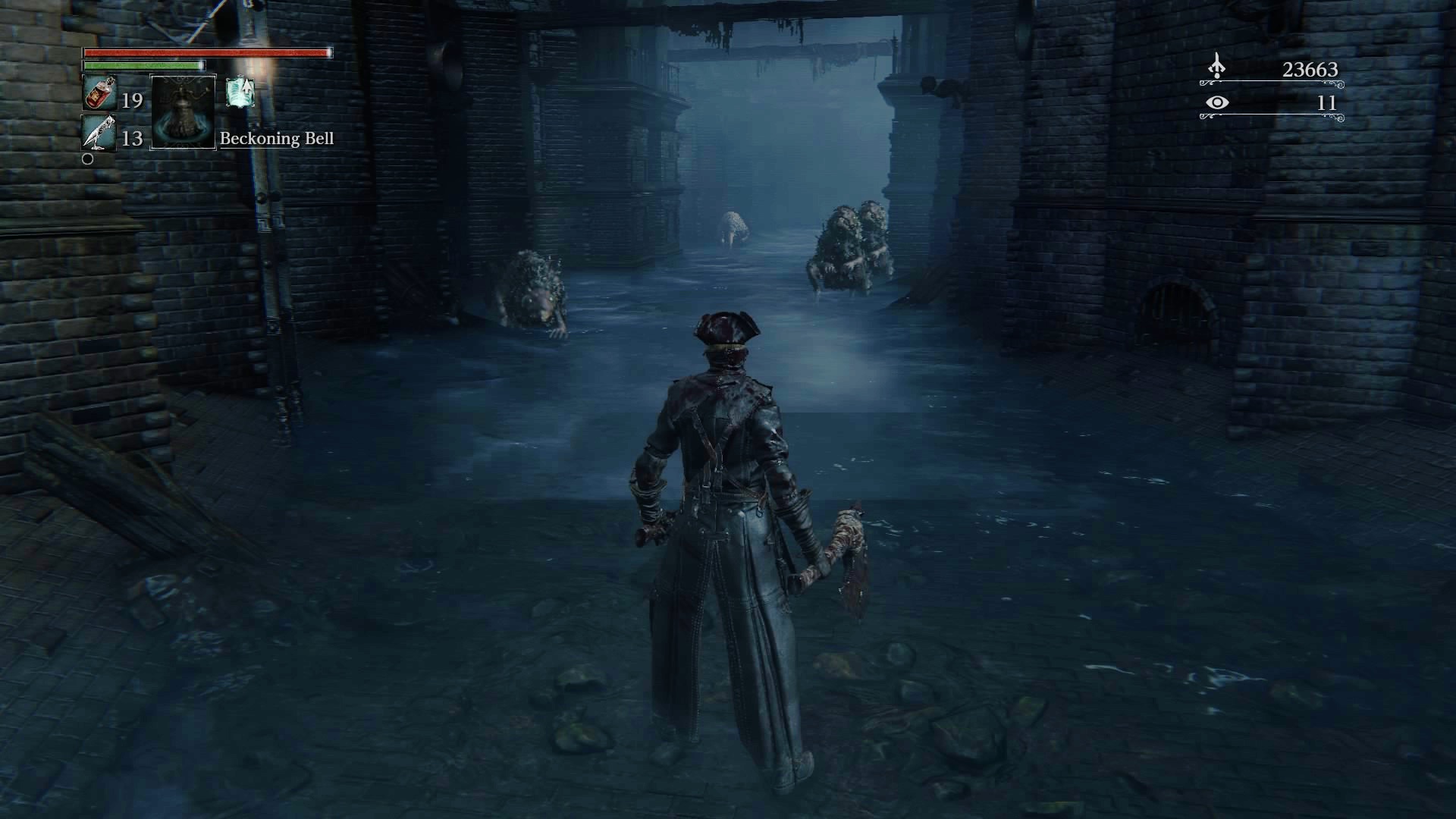
But more than this, Bloodborne’s co-op, and that of the Souls games before it, is another expression of Miyazaki’s wider message. In Dark Souls, you can only summon other players for help, or be invaded by hostile players, when your character is ‘human’ – unhollowed. In other words, it’s only when you’re ‘human’, when you have something to lose and have made yourself vulnerable to attack, that you’re able to reach out and make connections with other people. It is a beautiful philosophy of what it is to be human, expressed through a game about cleaving giant rats. Like Souls, Bloodborne is designed to be approached communally – these games are not meant to be beaten alone. Co-operation, trust and communication aren’t optional extras in these games – they are the light at its core.

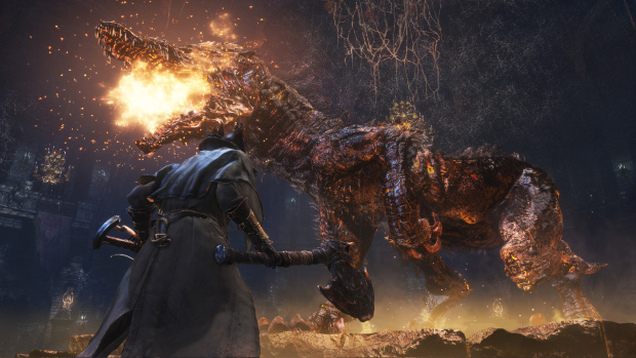
Comments
4 responses to “Bloodborne’s Multiplayer Is The Soul Of The Game”
I leave messages all over the place. Some useful, some just for fun. I also rate most messages I come across. It’s fun when you get that little notification that someone has rated one of your messages.
While I always enjoy killing a boss single handedly the first time I always go co-op afterwards. Ive never been as satisfied as I have been after killing a boss in DS2 or Bloodborne then getting messaged afterwards with gratitude from the person or people who needed the assistance. Ive never seen that in any other game and thats what makes these games truly special.
I have been patrolling both Frontier and Mensis for like three hours this morning just “reminding” people to murder their bell maidens.
One feature I would love to see in a futures Souls title would be not so much persistent coop but at least for it to last a little longer.
I love having a message rated fine during a boss for a much needed health boost.
I also love how every hunter I’ve come across, good or bad, greats with a bow or a curtsy. That is the best